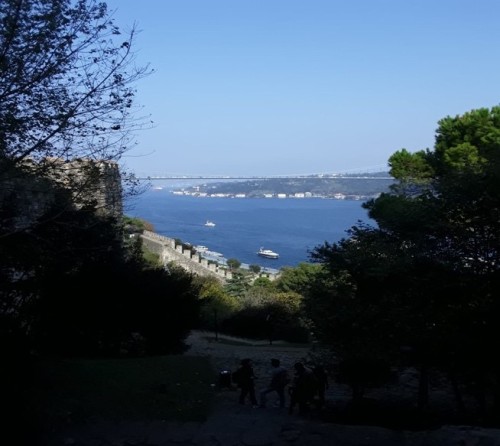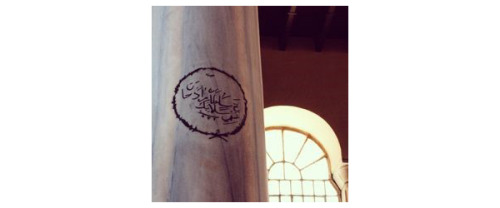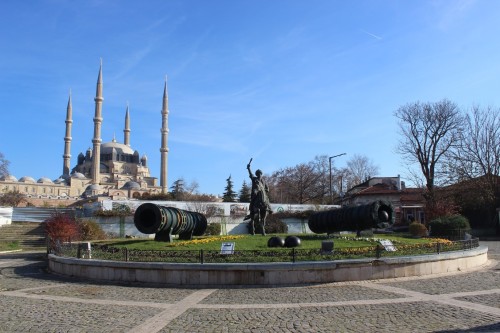
My entry on the ANAMED blog takes a look at the new Netflix docudrama: Rise of Empires—Ottoman, a second effort following on its last docudrama on czar Nicholas II Romanov of Russia (reviews of that series were mixed; the Guardian wasn’t kind (https://www.theguardian.com/tv-and-radio/2019/jul/11/the-last-czars-netflix-historical-drama-that-the-whole-of-russia-is-laughing-at), but the Daily Beast raved (https://www.thedailybeast.com/the-last-czars-inside-netflixs-stunning-russian-answer-to-the-crown).
All 6 episodes of Ottoman were made available for streaming on Netflix this past Friday, 24 January. The reviews I’ve found published so far have been positive ( https://www.thereviewgeek.com/riseofempires-ottoman-s1review/, https://www.hitc.com/en-gb/2020/01/24/rise-of-empires-ottoman-netflix-narrator-charles-dance-actor/, https://www.thecinemaholic.com/rise-of-empires-ottoman-netflix/, https://readysteadycut.com/2020/01/24/rise-of-empires-ottoman-netflix-review/) and at least one ANAMED fellow was watching the series yesterday and seemed to be thoroughly entertained. Having watched the episodes myself, and being an enthusiast of period pieces generally, my opinion of the series is also positive overall. Each 45-minute episode addresses a particular theme/step in the process of Sultan Mehmed II’s (Fatih Sultan Mehmed) eventual capture of the capital of the Byzantine Empire, Constantinople. The series draws on both modern accounts and ancient, both Byzantine and Ottoman. The format is further supplemented by breaks in the historical dramatization to receive background information and explanations from scholars on the period.
Being a fellow at ANAMED this year has decisively influenced the way I viewed this series because over the last few months I have had the opportunity to explore this living treasure chest of past civilizations, and to the series’ credit, it is filmed on site here in Istanbul (though, of course, special effects and constructed sets are also employed). Generally, I’ve been fortunate; since I have studied in nearby Thessaloniki, I managed to visit Istanbul a few times before coming to ANAMED. Nevertheless, I never even scratched the surface compared to what I’ve experienced and learned now (and I certainly haven’t even scratched the surface this time, either, in relation to what the city has to offer). That being said, my time here has afforded me the opportunity to visit some of the monuments and sites mentioned in the series—of course, with the knowledgeable and pleasant company of other fellows! For example, episode 1 takes a look at Mehmed II’s bold construction (in 4 months!) of Rumelihisarı. I visited the site last October, currently located just north of the scenic Bebek neighborhood on the European side of the Bosphorus. Mehmed II’s construction of the fortress sent a message to Constantinople that he was coming.

image credits: Stavroula Valtadorou
This by itself wasn’t enough to necessarily unnerve either Constantine XI, the reigning Byzantine emperor at the time (and the last one, of course), or any of his predecessors. As the series repeatedly notes, many armies had come and gone, falling either dead or else impotent at the impenetrable fifth-century Theodosian Walls. It had been common knowledge among Byzantine rulers for centuries that, when all else failed, Constantinople would withstand any possible attack. Hold the city and you’re emperor. This was what Mehmed II’s father, Murad II, had learned the hard way back in 1421. The Byzantines didn’t need superior forces (which was good because they hadn’t had any for a long time); their diplomacy was enough as long as the walls held, and a well-timed revolt or challenge to the throne was usually enough to make massive armies disappear. Murad II had better luck in Thessaloniki, which he captured in 1430. He immediately proceeded to convert the Panagia Acheiropoietos Church (built in late 5th century) into a mosque, and his seal commemorating his victory and thanking Allah can still be seen in the now functioning church to this day.

image credit: https://gr.pinterest.com/pin/510947520199763166/?d=t&mt=login
The series does a good job of explaining Mehmed II’s motivation in taking Constantinople, as well as the factions within his own Court that sought to undermine him. Since his father, Murad II had failed, Mehmed II was determined to succeed. In order to do so, though, he needed superior technology, and this is precisely what he procured in the form of the legendary “basilica” canons, which did eventually manage to breach Constantinople’s famed defenses. In Edirne, capital of the Ottoman Empire at the time, a monument commemorates Mehmed II’s victory, complete with a replica of some of his cannon.

image credits: ANAMED PhD fellows Jeffrey Haines and Athanasios Sotiriou
The story that Rise of Empires—Ottoman tells is full of detail and vivid imagery, making it accessible to anyone (even Byzantinists (!), who are usually trained to stop thinking of anything past 1453…) All in all, this mini-series is enjoyable, engaging and, if you’re an ANAMED fellow, yet another reminder to get out there and explore this incredible city and country that is full to the brim with historical treasures everywhere you look. My stay at ANAMED has made this experience come alive for me like never before, interacting with both the place and the people, especially benefiting from the extensive knowledge of other fellows. The series by no means replaces the in-person, hands-on experience of the city, but for anyone not yet fortunate enough to have been here, perhaps it will provide the impetus you need to make the effort to visit and explore. I highly recommend the series, because, if for nothing else, it reminds us fellows of what we enjoy every day throughout these 9 months and may serve as an initiation for others to come and experience the same one day.
I am grateful to all the fellows who helped with this post by providing pictures and/or background information to supplement my (embarrassingly almost non-existent) knowledge of the Ottoman Empire: Betül Kaya, Ibrahim Mansour, Jeffrey Haines, Athanasios Sotiriou, and Stavroula Valtadorou (my fellow!).

